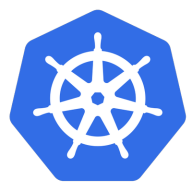

Splunk Observability Cloud and Kubernetes are leaders in their respective fields of data visibility and container management. Splunk seems to have the upper hand in providing comprehensive monitoring capabilities while Kubernetes excels in scalability and resource management for cloud-native applications.
Features: Splunk Observability Cloud includes efficient log gathering, fast search indexing, and robust application performance monitoring. It allows for customized dashboard creation and integrates data from multiple sources. Kubernetes offers features like auto-scaling, container orchestration, and resource management. It supports high availability and can run on any cloud platform, making it highly flexible for container deployment.
Room for Improvement: Splunk users suggest improvements in integration capabilities, cost efficiency, and the complexity of its interface. More automation in data management could also enhance user experience. Kubernetes is often criticized for its complex installation and administration process. Users seek enhancements in security integrations, dashboard customization, and a more user-friendly approach.
Ease of Deployment and Customer Service: Splunk supports hybrid deployments and is praised for its prompt customer support, although feedback indicates inconsistency at times. Some users rely heavily on community support. Kubernetes offers versatile deployment options across cloud and on-premises environments but requires significant expertise for setup. While the community support is strong, formal support could enhance user experience, especially for complex integrations.
Pricing and ROI: Splunk Observability Cloud is considered expensive, with pricing based on ingestion volume. However, it provides a good return on investment through enhanced development efficiency. Kubernetes, being open-source, is a cost-effective solution with infrastructure expenses. It remains an attractive option for enterprises looking for scalable container solutions.
| Product | Market Share (%) |
|---|---|
| Kubernetes | 6.3% |
| Splunk Observability Cloud | 0.5% |
| Other | 93.2% |


| Company Size | Count |
|---|---|
| Small Business | 25 |
| Midsize Enterprise | 9 |
| Large Enterprise | 47 |
| Company Size | Count |
|---|---|
| Small Business | 20 |
| Midsize Enterprise | 10 |
| Large Enterprise | 44 |
Kubernetes (K8s) is an open-source system for automating deployment, scaling, and management of containerized applications.
It groups containers that make up an application into logical units for easy management and discovery. Kubernetes builds upon 15 years of experience of running production workloads at Google, combined with best-of-breed ideas and practices from the community.
Splunk Observability Cloud offers sophisticated log searching, data integration, and customizable dashboards. With rapid deployment and ease of use, this cloud service enhances monitoring capabilities across IT infrastructures for comprehensive end-to-end visibility.
Focused on enhancing performance management and security, Splunk Observability Cloud supports environments through its data visualization and analysis tools. Users appreciate its robust application performance monitoring and troubleshooting insights. However, improvements in integrations, interface customization, scalability, and automation are needed. Users find value in its capabilities for infrastructure and network monitoring, as well as log analytics, albeit cost considerations and better documentation are desired. Enhancements in real-time monitoring and network protection are also noted as areas for development.
What are the key features?In industries, Splunk Observability Cloud is implemented for security management by analyzing logs from detection systems, offering real-time alerts and troubleshooting for cloud-native applications. It is leveraged for machine data analysis, improving infrastructure visibility and supporting network and application performance management efforts.
We monitor all Container Management reviews to prevent fraudulent reviews and keep review quality high. We do not post reviews by company employees or direct competitors. We validate each review for authenticity via cross-reference with LinkedIn, and personal follow-up with the reviewer when necessary.